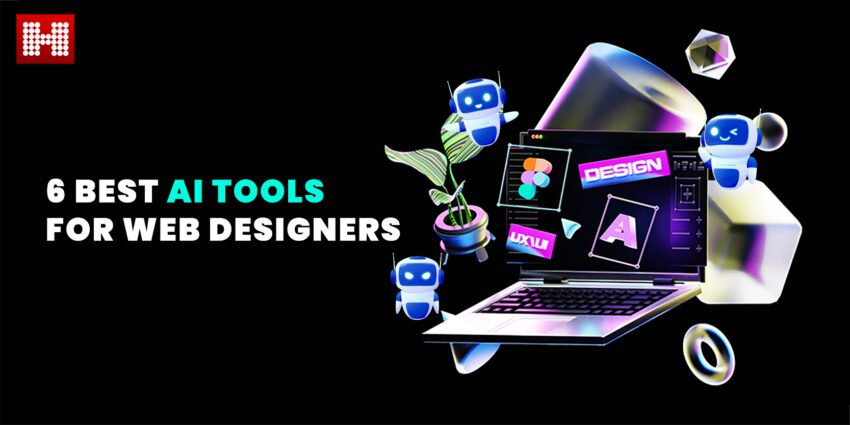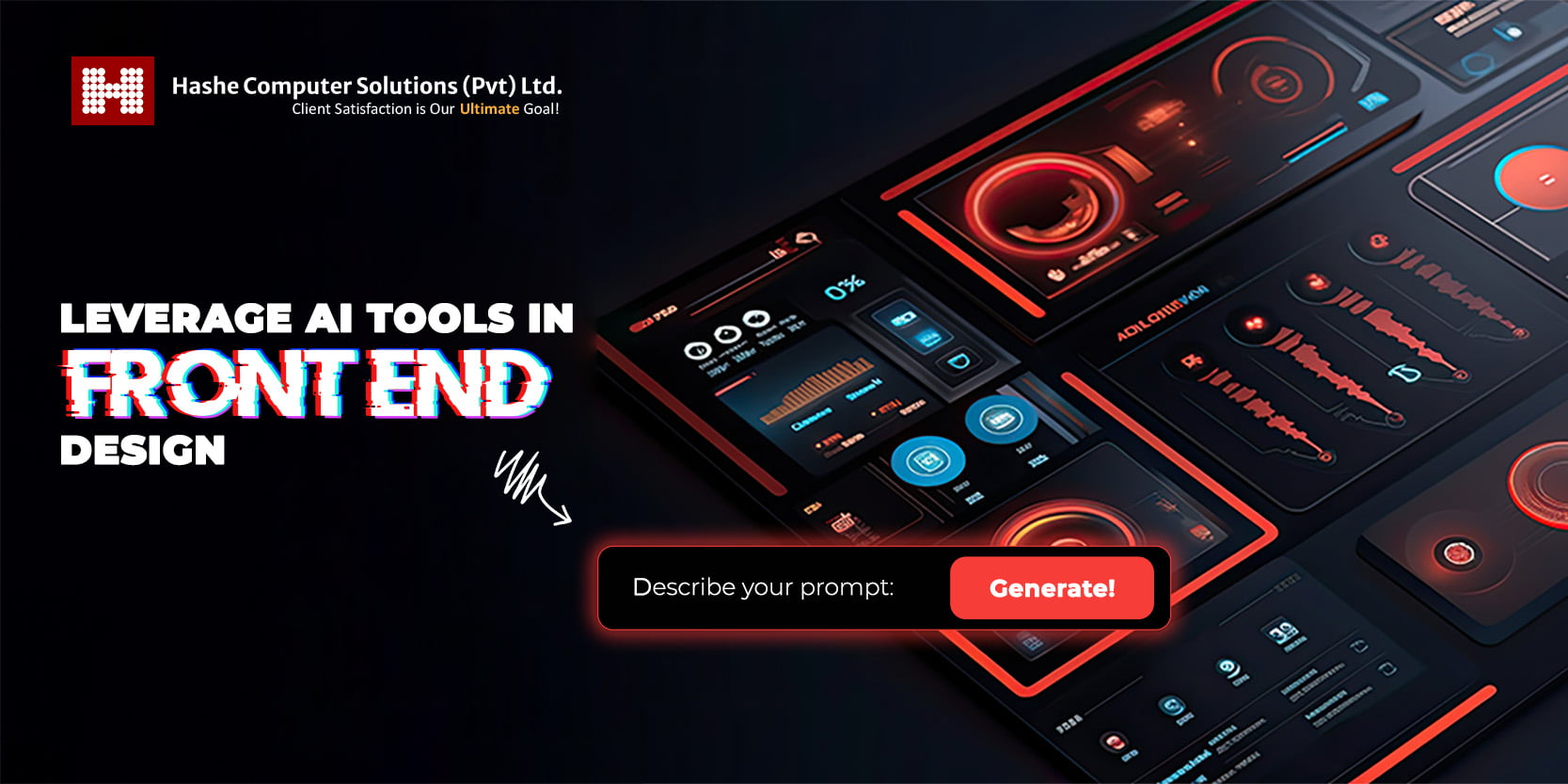
Artificial intelligence is a buzzword for a reason—it denotes a new stage in the evolution of the digital world. When applied to every market sector, it opens up new possibilities and efficiency, allowing individuals to take on their duties and capacities at specific activities at a cheap cost and on a large scale.
Now, how can it help web designers? Web designers can now produce more impactful and intuitive designs because of the rapid advancement of technology, which has given rise to a spectrum of AI-powered tools. These AI solutions assist web designers by optimizing their workflows and freeing up more time for creativity and productivity.
Let’s look at some of the best AI tools that may assist web designers in creating the ideal website!
1. Colormind and Khroma
Creating visually appealing color schemes is one of the most common, tedious, yet crucial tasks in web design flow. The good news is AI tools are available to help the designers with this task!
Color can rapidly make or break a project, as anybody knowledgeable in color psychology knows. It is essential to the success of web design since it raises brand recognition and boosts conversions.
Designers have to spend hours finding the perfect balance of colors to create a color scheme that meets the client’s expectations.
But this step of web design has become easier, quicker, and less complicated with the advent of color palette generators like Colormind and Khroma.
Since Colormind has been around for a while, the community has extensively tested and approved it. It picks up color schemes from images, videos, and popular art uploaded daily. It already contains a massive collection of color palettes created by others.
You may train Khroma, an AI-powered color tool, by selecting the 50 colors you prefer. Based on these selections, the algorithm creates limitless possible color palette combinations. Templates covering common use-case scenarios, such as Type, Poster, Gradient, and Image, can display them. Users can also experiment with color schemes on their own photographs.
These two tools significantly reduce the time needed for this stage of site creation.
2. Dall-E
We could not resist bringing up Dall-E when discussing deep learning models that can produce digital pictures from descriptions in natural language. Despite some legal difficulties arising from unclear image ownership, this powerful AI technology has already altered the way we can make images in particular styles,
Dall-E creates graphics in response to commands. It may generate realistic images at greater resolutions that represent certain concepts, exhibit specific qualities, and even emulate favored styles.
It alters existing photographs by adding or deleting objects while taking into account shadows, reflections, and textures. Furthermore, it generates several versions based on the original image.
3. Uizard
With the help of this exceptional AI-powered tool, web designers can develop websites with stunning aesthetics, captivating functionality, and an extraordinary user experience without needing any design knowledge or expertise. Clients may quickly transform their hand-drawn concepts into polished, workable digital versions with Uizard. It’s the next generation of widely used drag-and-drop playground website builders.
There’s more! You may show the platform many screenshots of interfaces you like if you don’t have a sketch. The AI tool will produce a distinctive UX design style on its own!
From small landing pages to large-scale e-commerce enterprises and online apps, Uizard can design interfaces for mobile apps and websites. It covers a variety of scenarios relevant to product managers, user experience designers, company founders, consultants, and engineers.
4. Vance AI
AI image processing and automated picture editing technologies have immensely eased the lives of web designers and anybody who needs professionally edited or polished photographs. Among the most well-known players is the Vance AI.
This terrific AI assistant offers website designers the following features.
- Photo enhancer, upscale, denoiser, sharpener.
- Background remover
- Portrait retoucher and colorizer.
- Photo dehazer.
- Photo restorer.
- Art generator from the text.
- Imitation of artistic styles.
- Cartoon maker.
- Turning a photo into a line drawing.
Vance AI employs Deep Convolutional Neural Networks (trained on millions of photos), which allows it to handle genuine details with exceptional precision.
Web designers can leverage the platform to streamline processes and provide new opportunities for imaginative picture edits and manipulations that adhere to client and brand requirements.
5. Midjourney
Midjourney has recently gotten plenty of attention. I am sure you have heard of it once or twice if you’re a designer. The platform is still in its early stages of development, but even so, the feedback it receives for enhancements is valuable. It is now accessible in open beta.
It is a chatbot that converses with people in their native language. Designers may give it commands to generate pictures, including online interfaces, from written descriptions and prompts. It is ideal for conceiving ideas and producing unique content perfect for so-called “custom ads created for individuals.”
According to Midjourney’s inventor, the platform is for quick prototyping, which may save artists a significant amount of time and provide them with designs based on their ideas that they can present to their clients to guarantee the best possible collaboration and productivity.
6. Font Joy
Font Joy is an ideal alternative for combining Google fonts. It takes time for a web designer to find the perfect font combinations for a new project. Fortunately, Font Joy significantly lessens the agony of the procedure. Font Joy is rather straightforward; there aren’t many extra bells and whistles. Still, it’s an effective tool for creating a positive font-using experience.
The font visualizer tool is among Font Joy’s top features. Once you select a font, it suggests combinations depending on how similar and close together the fonts are on a three-dimensional map. It utilizes several variables to find the ideal font pairing for the font you select, such as font weight, obliqueness, and X and Y axis.
Conclusion
There are many real-world applications of AI that are presently enabling businesses to reduce costs and increase income, and web designers are no exception. Web designers now have incredible chances to streamline their workflows and finish projects more quickly and easily, thanks to the rapid advancement of artificial intelligence technologies.
Web designers may use AI assistants to help them with small but effective menial tasks. It will, in turn, boost their creativity and reduce their burden. In order to free up more time for personal growth, follow the current trend and leverage AI-powered technology to improve workflow, avoid boring, repetitive, and uninteresting tasks, and complete your project swiftly and efficiently.
Are you looking for the best IT providers for your IT projects? Look no further than Hashe! Hashe Computer Solutions is a leading IT solutions provider that offers world-class software, mobile application, web development, and digital marketing services. Contact us for the best web design solutions!
Keep following us for more tech news! Check out our Social Media Pages
Was this helpful?
Last Modified: June 25, 2024 at 7:29 am
162 views











